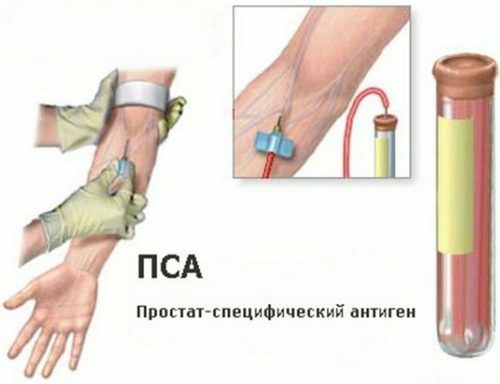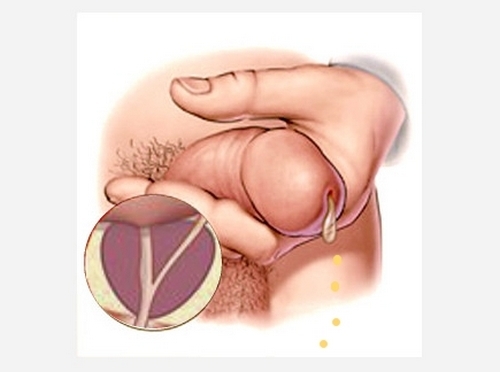Methods for diagnosing prostatitis and self-diagnosis
Prostatitis is a multifaceted disease capable of putting an end to male sexual health and health in general( in the advanced stages of the pathology course).That is why it is necessary to conduct timely diagnosis of this dangerous disease. What are the methods used to monitor patients with a urological profile?
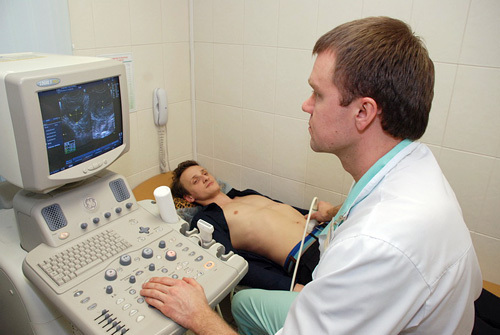
Diagnosis of prostatitis is always complex.
- 1
- 2
- 3
-
- 3.2 Prostate juice analysis
- 3.3 Urethral smear
- 3.4 GeneralUrine analysis
- 3.5 General sperm analysis
- 3.6 Cystoscopy
- 3.7 Uroflowmetry
- 3.8 ultrasound of the prostate
- 4 Findings
-
About the self-diagnosis
Self-diagnosis is more importantShai part of diagnostic procedures. Not suspecting anything wrong, the patient will not go to the hospital. In this case, the disease will flow gradually, developing further and undermining the health of men. How is self-diagnosis carried out?
- You need to pay attention to your own health. First of all, you should honestly answer yourself questions about the symptoms of prostatitis. An excuse to be alert if there are:
- pains in the area of the pubis, anus, lower abdomen of the aching or other character, with clear localization and without;
- discomfort and difficulty with urination, frequent false urges to visit the toilet;
- problems with erection and the inability to complete sexual intercourse, regular nightly awakenings to the toilet,
- You should look at your own urine and semen. If they contain impurities of mucus, blood, yellow pus - this is an extremely dangerous sign that can indicate various pathologies of the urinary tract, including prostatitis.
First visit to the doctor
Finally, having decided to visit the clinic, you need to go to a urologist or urologist-andrologist. At the reception, the specialist asks suggestive questions and collects an anamnesis of the patient's life. The most important issues are:
- What is the duration of the course of the alleged disease? How long have complaints about health?
- What kind of disease did a person suffer during a lifetime? Are there any pathologies of the pelvic organs or the urinary system? What kind?
- What preceded the development of productive symptoms? It is necessary to recall all the circumstances in detail.
- Does the patient have a history of prostatitis? How long ago?
- How often does the patient practice intercourse?
- What kind of lifestyle does the patient lead? Does it sport, how does it eat, smoke?
- What is the professional nature of the patient?
- Did a person suffer from sexually transmitted diseases?
If the doctor forgot one of the above points, do not hesitate to remind them of them. As a rule, in modern clinics, an anamnesis is collected by filling out a special questionnaire.
Diagnostic methods
Rectal digital research
Main article: Rectal examination of the prostate
Informative technique of primary diagnosis. Allows you to determine the size of the prostate gland, its composition and structure, determine the patient's pain reactions. As a rule, in the absence of pathological changes on the part of the prostate, the procedure does not cause pain. The discomfort is indicative of the presence of a prostatic process. In this case, inflammation of the prostate is accompanied by pain during palpation.
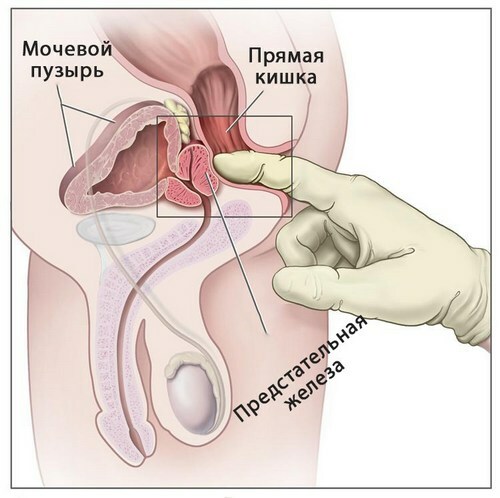
Technique for rectal examination of the prostate
The procedure is as follows. The doctor puts on a medical glove and inserts the index finger into the patient's anus to gain access to the gland. The patient himself is in an inclined position.
Analysis of prostate juice
Main article: Analyzing the secretion of the prostate
It is recommended to perform a cleansing enema before taking a fluid. The doctor massages the prostate gland through the anus, then collects the juice into a special container and sends it to the laboratory to evaluate the composition.
Normally the secret of the prostate is a transparent viscous liquid without leukocytes, grains of lecithin, bacterial pathogens in its own structure. The juice has a slightly alkaline reaction and a normal density, within the limits of reference values. An increase in the number of leukocytes and grains of lecithin testifies to the inflammatory lesion. And the presence of bacterial flora, as well as an increase in acidity, indicates the development of the infectious process. Any deviation in color, density, composition - this is data in favor of prostatitis. However, the presence of infectious pathogens does not always give unambiguous data for prostatitis. Perhaps their penetration into the juice of the prostate gland from the urethra or bladder.
Urethral smear
Main article: Smear from the urethra in men
It is carried out immediately to identify two factors: the presence of pathogenic flora in the urethra( allows to avoid the error when collecting prostate juice) and identify current sexually transmitted diseases. The procedure is unpleasant, painful, but you need to endure it. PCR diagnostics and bacterial culture of mucus from the urethra are carried out.

Conduction of a smear from the urethra
General analysis of urine
It is prescribed with the same goals, besides it makes it possible to reveal pathologies of structures of the urinary system lying higher. A large diagnostic value is the presence of protein in the structure of urine, leukocytes, blood( hematuria).Bacterial culture of urine is carried out.
General sperm analysis
It is performed to identify problems from the fertilizing properties of seminal fluid that inevitably occur with a prostatic lesion. Evaluation of the physico-chemical properties of the fluid and fertilizing properties makes it possible to assess the extent of disorders in the male body. This is an extremely necessary auxiliary procedure.
Cystoscopy
Main article: Cystoscopy in men
Allows to identify bladder and urethral pathology so that they do not affect the results of specialized prostatic samples.
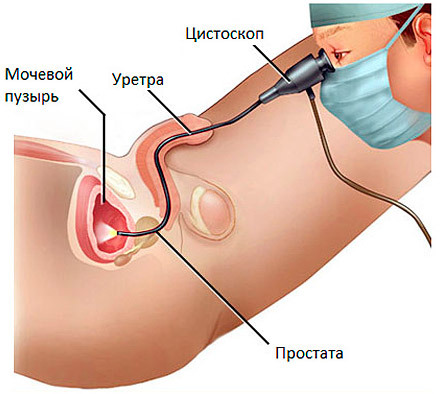
Cystoscopy
Uroflowmetry
Main article: Uroflowmetry
Determines the rate of urine flow. Allows us to state the fact only. The study is conducted only in a complex, because it is not always possible to determine with accuracy where the prostatitis ends and prostatic hyperplasia begins.
Prostate ultrasound
Main article: Prostate prostate
It is necessary to assess the general condition of the body, its size, consistency, presence of concrements.
Conclusions
There are many methods for assessing the condition of the prostate. Diagnosis of prostatitis is a complex and very uncomfortable way, which, however, must be passed in order to maintain health. Only after the end of the complex diagnosis can we talk about the appointment of an effective treatment.
Recommended for viewing:

